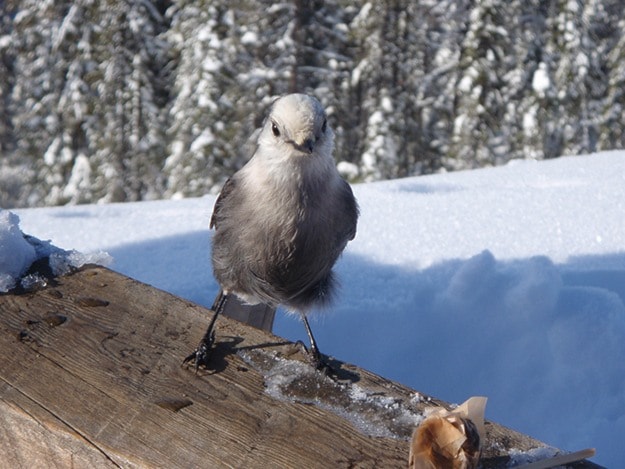By Michael Morris, Special to the Review
Revelstoke bird watchers conducted their annual survey of birds on December 17. Eighteen participants identified 893 individual birds from 44 species. The number of species of birds was normal, but the number of individual birds was lower than usual. The -14 C weather caused birds to minimize their activity to save energy, so they were harder to find than on a warmer day.
An additional 12 species were observed during the three days before and after count day and are referred to as count week (cw) birds.
The Revelstoke survey area is a circle with a 12-kilometre radius centred on the Trans-Canada Highway bridge across the Columbia River. This count is part of the Audubon Society's continent-wide Christmas Bird Count, an annual snapshot of bird populations across North America that began in the year 1900. It is the world's oldest and largest volunteer wildlife survey with more than 60,000 participants in more than 2,000 localities. Revelstoke bird watchers have contributed since 1981.
Included in the count were three grey jays at the Mackenzie Outpost at Revelstoke Mountain Resort. Grey jays were nominated by the Royal Canadian Geographic Society to be Canada's national bird. Why we need a national bird is not clear, but birdwatchers I talk to like the choice. These birds are found around Revelstoke in higher elevation forests.
The jays at RMR mooch food at the snack bar. They coat the food with a bit of saliva that has a preservative effect and then they stash it for later use. Somehow, they can recall where to retrieve thousands of stored food bits that they use when raising chicks. This occurs in late winter, well ahead of most other species. The advantage of fledging young birds so early is they are adept flyers before predators such as hawks return for summer. Jays are dutiful parents; I have seen them lead their young to food months after fledging.
Count results were compiled by organizer Don Manson.
Mallards (66), Greater scaup (1), bufflehead (8), common goldeneye (65), Barrow's goldeneye (8), hooded merganser (cw), common merganser (cw), ruffed grouse (1), great blue heron (2), bald eagle (7), sharp-shinned hawk (cw), Cooper's hawk (1), red-tailed hawk (1), rough-legged hawk (1), merlin (1), killdeer (1), Wilson's snipe (cw), rock pigeon (21), Eurasian-collared dove (56), great horned owl (cw), downy woodpecker (1), northern (red-shafted) flicker (37), northern (red x yellow) flicker (cw), northern (yellow-shafted) flicker (1), northern shrike (1), gray jay (3), Steller's jay (30), American crow (66), common raven (75), black-capped chickadee (56), chestnut-backed chickadee (5), red-breasted nuthatch (23), white-breasted nuthatch (1), brown Creeper (2), Pacific wren (2), American dipper (4), golden-crowned kinglet (7), American robin (cw), varied thrush (2), European starling (36), Bohemian waxwing (44), song sparrow (8), house sparrow (1), dark-eyed junco (4), dark-eyed (Oregon) junco (17), dark-eyed (slate-colored) junco (8), red-winged blackbird (35), Brewer's blackbird (2), pine grosbeak (cw), house finch (10), red crossbill (12), common redpoll (30), pine siskin (5), American goldfinch (113), and evening grosbeak (13).
